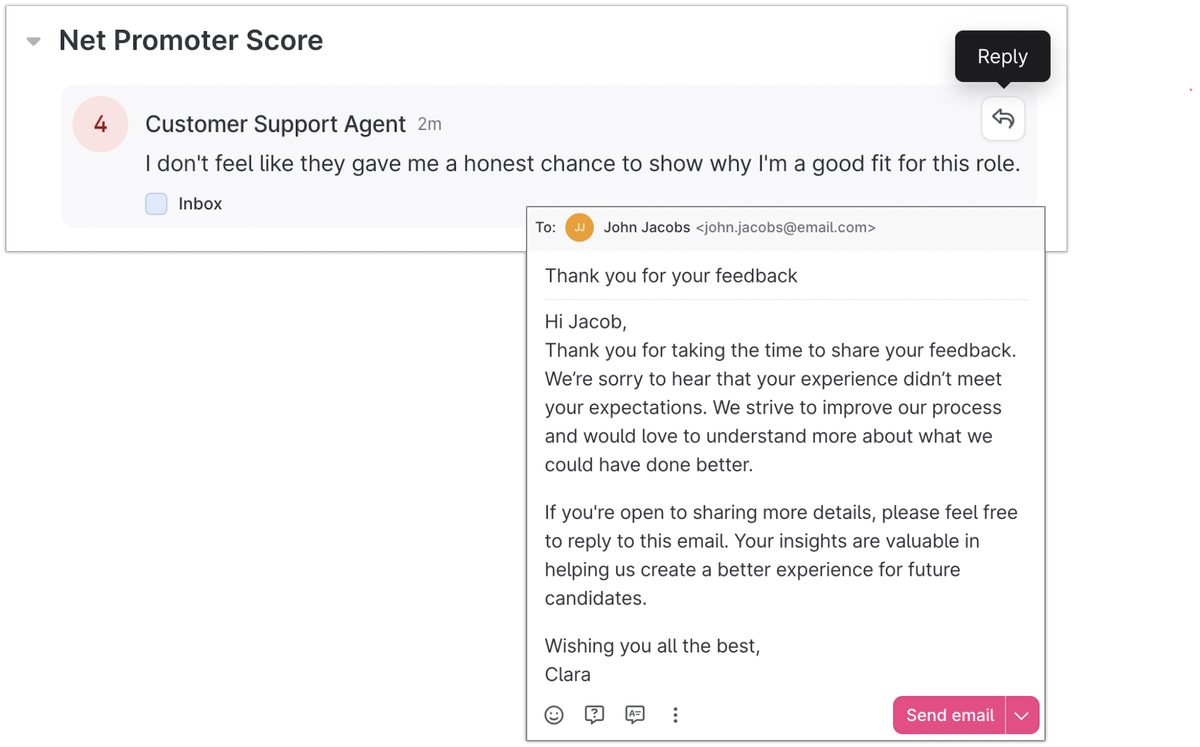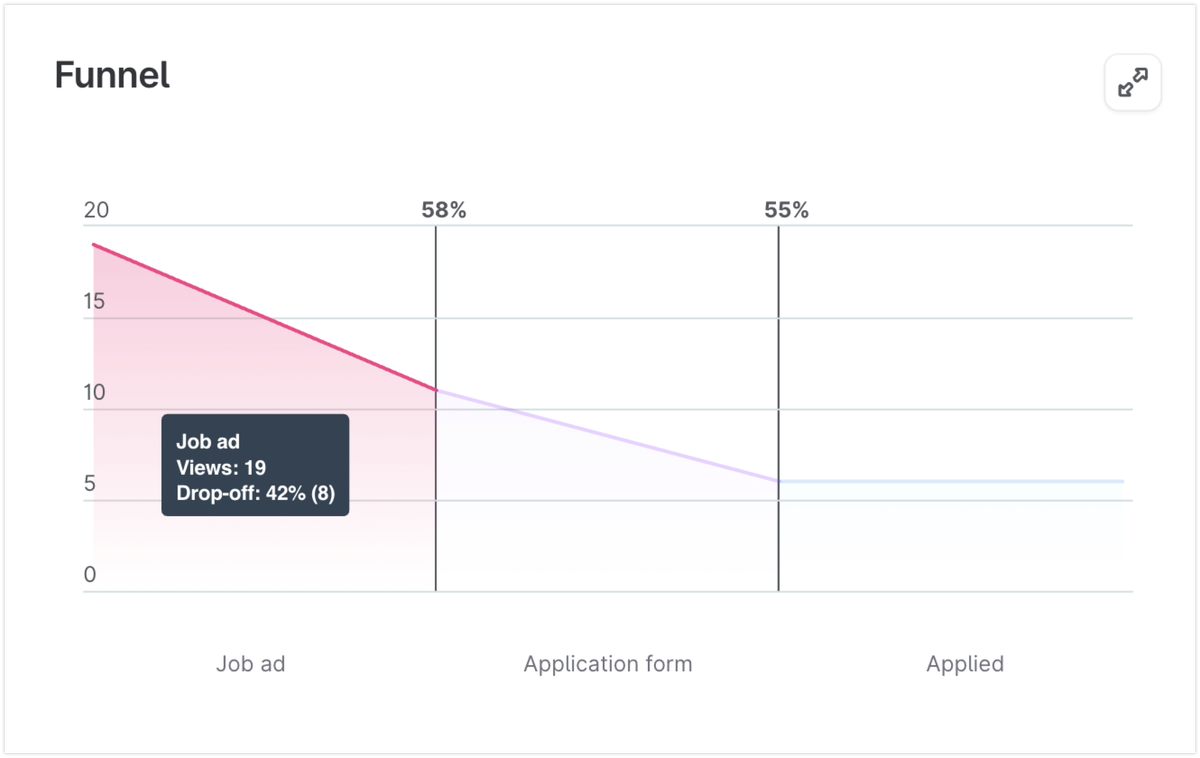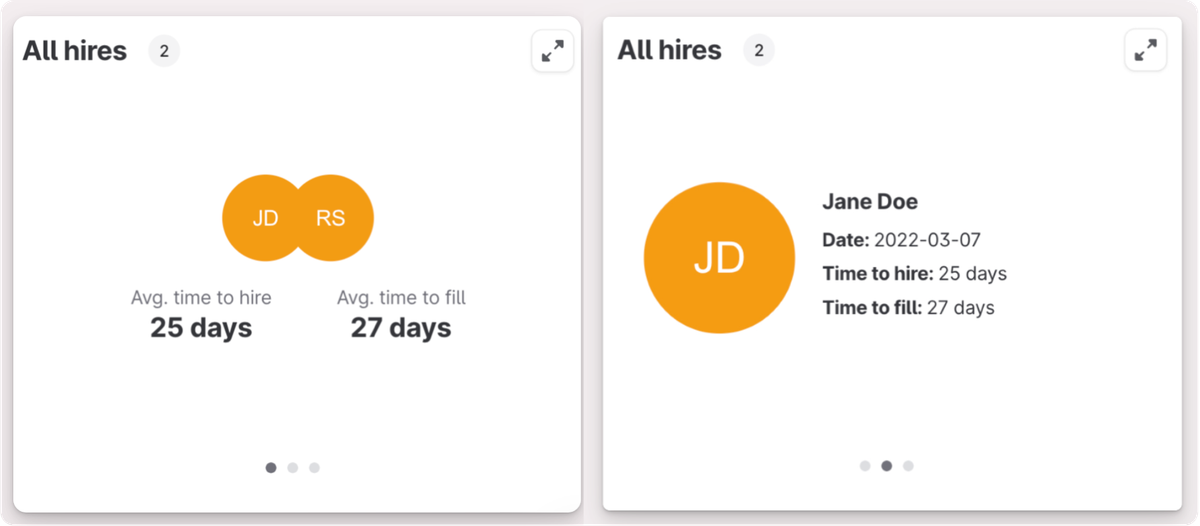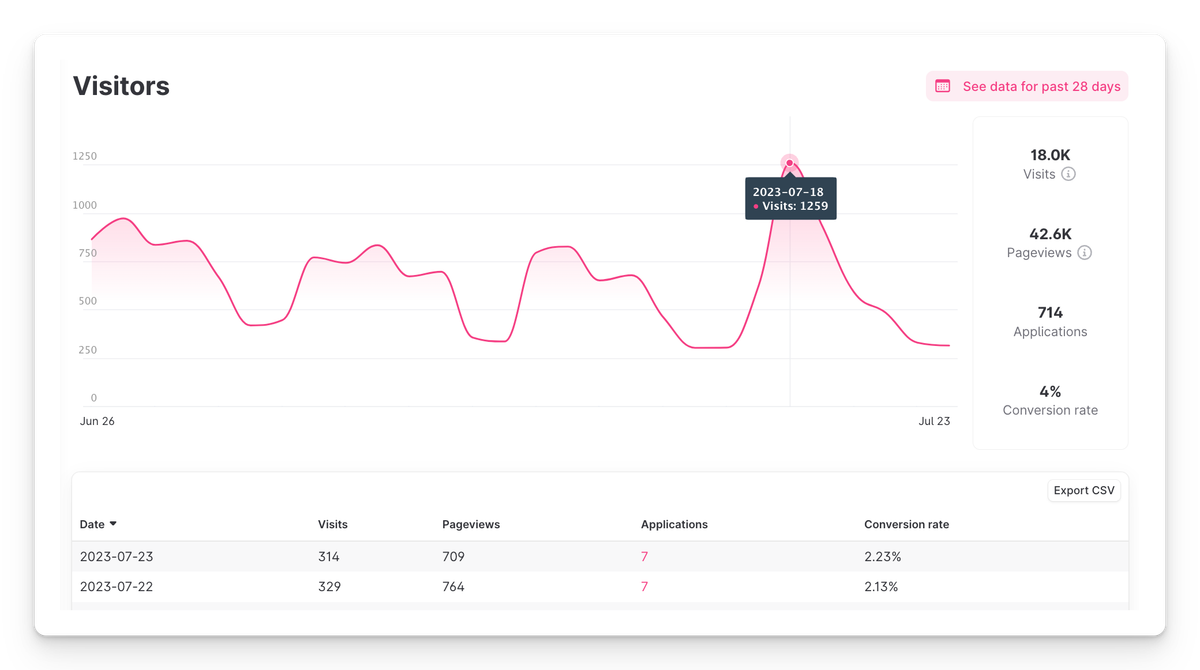How to measure your candidate experience


Valentina Behrouzi
I'm Val, one of the Marketing Managers here at Teamtailor, responsible for our Global marketing. I love talking about candidate experience and how we can strive to make hiring more inclusive.
In our recent recruitment trends report, 37% of HR professionals said that candidate experience was their main measure of success. This was the third main metric used, behind quality of hire and time to hire. But how do you actually measure candidate experience?
Whether they get the job or not, a positive candidate experience can turn applicants into advocates of your brand. Recruitment is like marketing, so a poor experience or poor reputation can damage your employer brand and cost you top talent.
In this blog, we’ll explore which metrics can be used to measure your candidate experience and how you can use these metrics to optimize your candidates’ journey with you.
See more 2025 recruitment trends 🎉
Why you should measure your candidate experience
All data is important, it’s how you improve. Without any data on your candidate experience, you’re most likely just making assumptions on how people are reacting to your recruitment process. Without an understanding of their experience, there’s no way to know how to make it better.
Having a great candidate experience can improve a number of things, including:
- Better quality candidates
- A stronger employer brand
- Increased acceptance rates
- Increased candidate referrals
- Reduced drop-off rates
- Reduced time-to-hire
Key metrics to track
1. Net Promoter Score (NPS)
A survey is one of the simplest ways to find out how your candidates feel about your recruitment process. Send an NPS survey after your candidates are done with the process, whether they get the job or not. You can even automate this within your Applicant Tracking System (ATS), to send at whichever stage you choose. These numbers will be invaluable.
By sending an NPS survey and asking for any additional feedback, you can study the low scores and identify patterns or inconsistencies. Consider setting up bi-weekly or monthly reviews to ensure you’re listening to feedback, and identifying where improvements can be made.

2. Drop-off rates
Take a look at your funnel data to measure your candidate drop-offs. A high drop-off rate could potentially signal some issues with your recruitment, such as a confusing or lengthy process. You can even measure exactly where candidates are consistently dropping off, whether it be the job ad or application, giving you an indication of where you should be improving.
A good step could be A/B testing different formats and seeing which ones are more successful than others. If you’re still consistently getting drop-offs at the application stage, perhaps go with an ‘Easy Apply’ option to make it simpler for candidates. Keeping your candidates interested and engaged is key to a successful experience.

3. Time-to-hire
Time-to-hire is an important metric for a lot of reasons. It can show you the efficiency of your hiring process, but can also be a good indicator of candidate experience.
If you have a lower time-to-hire, your hiring process is most likely quick, efficient and you get back to candidates in a timely manner. This means that you value your candidates time. Likewise, if your time-to-hire is longer, your candidates are more likely to lose interest and drop-off quicker.
It’s important to keep in mind this metric isn’t always black and white. There could be many reasons for your time-to-hire being longer depending on the nature of your company and its roles. But if you are looking to make your recruitment process more efficient, this is a crucial metric to track.

4. Acceptance rate
How many of your offers are accepted? A low acceptance rate is probably an indicator of issues with your recruitment process and the experience candidates are having. If this is happening consistently, it could be more than just the offer itself.
You want your candidates to be excited to join your company, and a high acceptance rate reflects this. Send a survey to anyone who rejects your job offer and try to get information of why this could be. This information, combined with your general NPS feedback could help you find areas where you need to improve, especially if the same points are coming up.
5. Career site engagement
Your career site will be your candidates’ first impression of you. Understanding how they will engage with it is key to understanding their experience.
How many visitors are you getting to your site? Are these visitors actually looking at your pages or do they quickly bounce? How many visitors become applicants? These numbers will show you how interested your candidates are. If you’re not getting the numbers you’d hoped for, it could be worth A/B testing different structures and formats for your site to see what people are engaging with more.

What to keep in mind
Communication is key
Even before you start measuring your candidate experience, it goes without saying that you should be getting back to your candidates in a quick and timely manner. Ghosting, impersonal emails or taking too long to reply are all things that will impact your candidate experience, without needing a metric to tell you so. There are many tools you can use to help you keep on top of your candidate communication, most already existing within your ATS.
Keep things simple
The simpler the things are, the better, and your drop-off rate will most likely reflect this. Try not to have lengthy, complicated application forms, where candidates will lose interest quickly. Don’t try to oversell the role in the hopes you’ll get more applicants, only to not deliver when the time comes. Be honest, transparent, keep things short and sweet, and your candidates will appreciate it.
Do your own research
In an episode of our podcast, Happy Recruiting! We discussed which small changes can make a big impact to the candidate experience. One of the main pieces of advice was the ‘mystery candidate’ concept. Apply to your own company’s roles, review the ease of the application, how long it took you to get a reply etc. This will give you a good indication of where you can improve. We also suggest doing this with your competitor’s roles, it’s likely they’re doing something you haven’t thought of, which could be good inspiration.
Measuring candidate experience in today’s job market is a necessity. The market is extremely candidate-driven, so you need to be standing out amongst your competitors and making sure your reputation is impeccable.
Interested in improving your candidate experience?
![]()
5 ways to improve your job postings
Your job posting is often the first impression your candidates are going to get of your company. We’ll go through a few quick and easy things you can do to improve your job postings and convert more candidates.
![]()
Preparing for the EU Pay Transparency Directive
How will the EU Pay Transparency Directive reshape the way we look at salaries? This episode covers what it means for recruiters and HR teams alike.
![]()
Mastering tech recruitment
In our latest episode of Happy Recruiting, we spoke with Diana Rose, Talent Acquisition Specialist at Boozt, for an in-depth conversation on tech recruiting. Why is there such a high demand, why is tech recruiting so unique and where does candidate experience come in?


